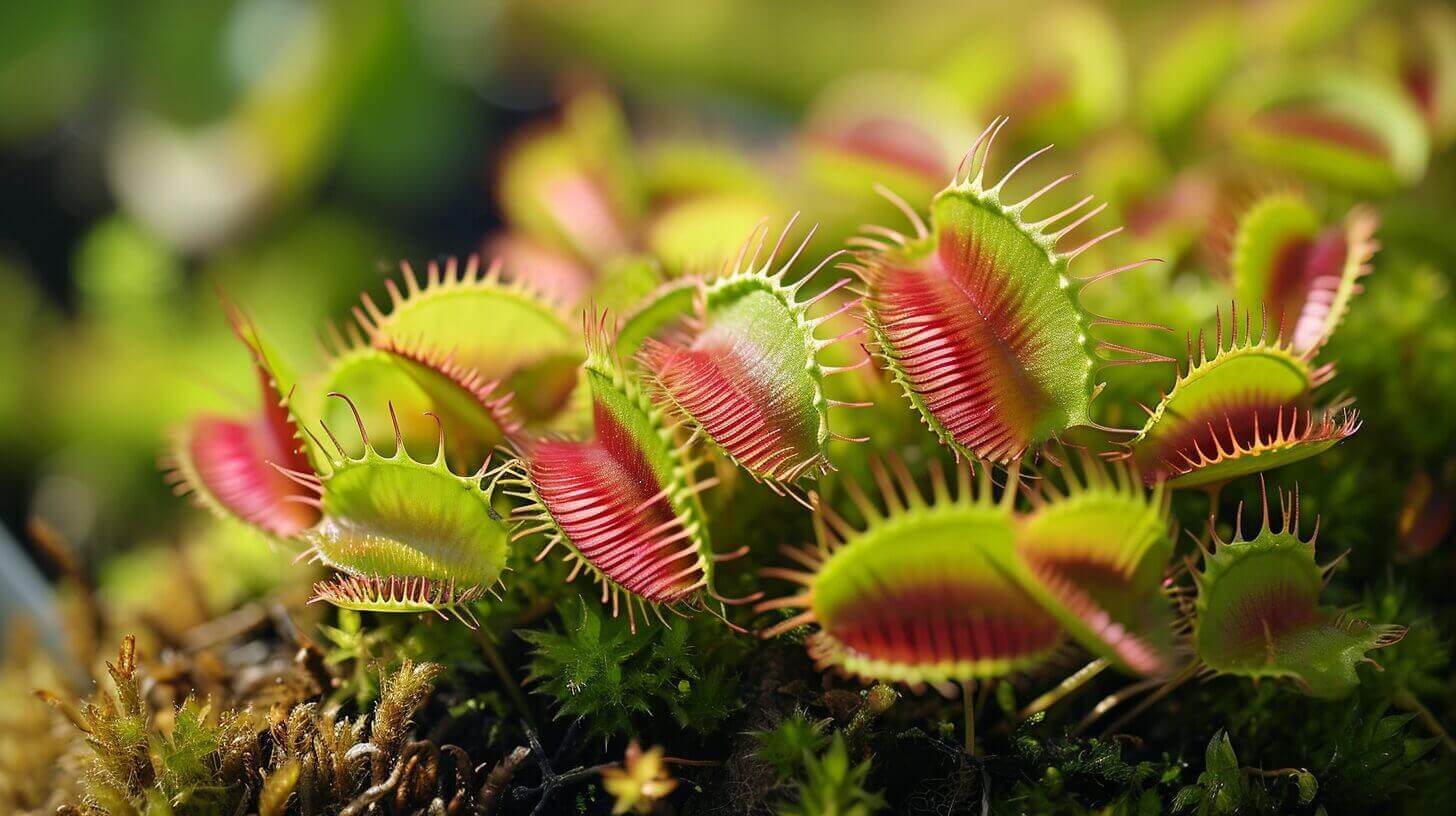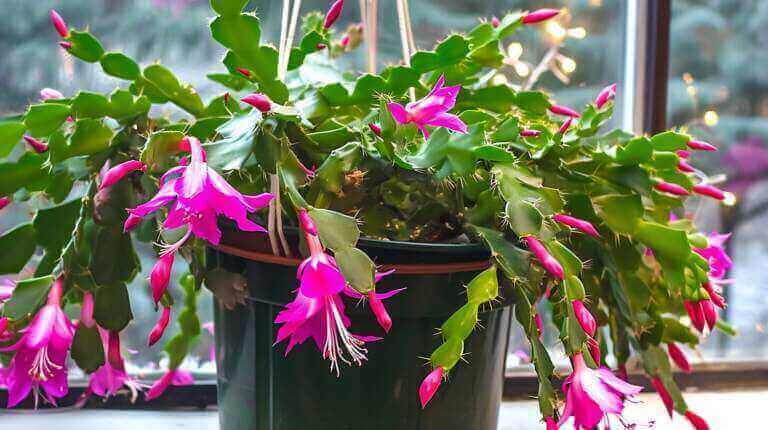Venus Flytrap Native Habitat and Range: Where Venus Flytraps Grow in the Wild
The Venus flytrap, scientifically known as Dionaea muscipula, is found in the temperate and subtropical wetlands of north and south carolina on the East Coast of the United States.
These carnivorous plants thrive in nitrogen- and phosphorus-poor environments such as bogs, wet savannahs, and canebrakes. They prefer wet sandy and peaty soils, and interestingly, they are typically found within a 75-mile radius of Wilmington, North Carolina.
However, the Venus flytrap’s survival is currently under threat. It is facing habitat loss, fire suppression, and poaching, which has led to its potential listing as an endangered species by the U.S. Fish & Wildlife Service. In fact, it is already considered a species of special concern in North Carolina, and poaching has been a felony since 2014.
Key Takeaways:
- The Venus flytrap is native to the wetlands of North Carolina and South Carolina.
- Its native habitat consists of nitrogen- and phosphorus-poor environments.
- The Venus flytraps need wet sandy and peaty soils to thrive, showcasing a unique adaptation to their environment.
- Habitat loss, fire suppression, and poaching are threatening its survival.
- The Venus flytrap is currently being reviewed for potential listing as an endangered species.
Anatomy and Characteristics of Venus Flytraps
The Venus flytrap is a fascinating carnivorous plant with unique anatomy and characteristics. Let’s take a closer look at its intriguing features.
Leaf Structure and Trap Mechanism
The Venus flytrap has a rosette of leaves that arise from a bulb-like stem. Each leaf consists of a flat, heart-shaped petiole capable of photosynthesis and a pair of terminal lobes that form the trap structure. The lobes have hair-like trigger hairs on their inner surfaces.
When an insect or spider touches these trigger hairs, the trap is triggered and begins to close. It requires two successive touches within a short period of time for the trap to fully close and trap the prey. This mechanism ensures that the Venus flytrap only captures live prey and conserves energy.
Digestion and Photosynthesis
Once a prey is trapped, the Venus flytrap releases digestive juices to break down the insect and obtain nutrients that are not readily available in the soil. This unique ability to supplement its diet with insects allows the plant to thrive in nutrient-poor environments.
While the Venus flytrap primarily relies on photosynthesis for energy, it also uses its petioles to capture sunlight and produce sugars through photosynthesis. This combination of carnivorous behavior and photosynthesis sets the Venus flytrap apart from other plants.
Adaptations and Survival
The Venus flytrap’s unique adaptations enable it to survive in its native habitats. Its ability to capture and digest prey allows it to obtain essential nutrients, while its photosynthetic petioles provide an additional source of energy. These adaptations have allowed the Venus flytrap to thrive despite the challenges of its nitrogen- and phosphorus-poor environments.
| Characteristic | Description |
|---|---|
| Trap Mechanism | The Venus flytrap’s lobes have trigger hairs that close the trap when stimulated by prey. |
| Digestion | The plant releases digestive enzymes to break down captured prey for nutrient absorption. |
| Photosynthesis | Photosynthetic petioles allow the Venus flytrap to produce sugars for energy. |
| Adaptations | The plant’s carnivorous behavior and photosynthetic capabilities help it survive in nutrient-poor environments. |
Threats to Venus Flytrap Populations and Conservation Efforts
The Venus flytrap population is facing numerous threats in its natural habitat, which require immediate conservation efforts to protect this unique species. One of the primary threats is habitat loss, resulting from activities such as fire suppression, conversion of land for agriculture and silviculture, and urban development. These activities lead to the decline of suitable habitats for the Venus flytrap, disrupting its delicate ecosystem.
Fire suppression is a major concern because it allows shrubs and trees to encroach upon the Venus flytrap’s habitat, reducing the quality of the environment. The plant requires open habitats with ample sunlight to thrive. Poaching is another significant threat, as Venus flytraps are often illegally taken from the wild for sale in the horticulture trade. It is crucial to address these threats to ensure the survival of the Venus flytrap.
Conservation efforts are underway to protect the Venus flytrap and its habitat. The species is currently listed as a species of special concern in North Carolina, and poaching became a felony in 2014. The U.S. Fish & Wildlife Service is also reviewing the Venus flytrap for potential listing under the Endangered Species Act. These actions aim to provide legal protection and raise awareness about the importance of conserving this carnivorous plant.
Conservation efforts primarily focus on preserving the unique habitats where the Venus flytrap occurs. This includes monitoring populations, identifying critical areas for protection, and implementing prescribed burning to maintain the open habitat the plant requires. Prescribed burning not only prevents encroachment by trees and shrubs but also promotes the growth of the Venus flytrap’s prey, ensuring a sustainable food source for the plant.
Importance and Fascinating Facts about Venus Flytraps
As a professional copywriting journalist, I find Venus flytraps to be captivating and unique perennial carnivorous plants. They have a remarkable lifespan of up to 20 years in the wild. These fascinating plants rely on insects for additional nutrients, but interestingly, they do not trap their pollinators. Venus flytraps are pollinated by flying insects, while they primarily consume crawling insects.
The Venus flytrap holds great importance within the wet, open longleaf pine savannas where it thrives. These habitats are vital and require frequent fires to maintain open stands, preventing trees and shrubs from encroaching on the Venus flytrap’s distinct habitat. Unfortunately, longleaf pine forests, the natural home of Venus flytraps, only occupy a mere 3% of their former range in the Coastal Plain.
Their unique pollination and specific habitat requirements make the Venus flytrap a truly fascinating and essential plant species to protect and conserve. Preserving these carnivorous wonders contributes to the preservation of the longleaf pine savannas and the delicate balance of their ecosystems.
FAQ
What is the native habitat and range of the Venus flytrap?
The Venus flytrap is native to the temperate and subtropical wetlands of North Carolina and South Carolina, in the United States. It is found within a 75-mile radius of Wilmington, North Carolina.
What is the unique anatomy of the Venus flytrap?
The Venus flytrap consists of a rosette of leaves arising from a bulb-like stem. Each leaf has a flat, heart-shaped petiole for photosynthesis and a pair of terminal lobes that form the trap structure. The lobes have trigger hairs on their inner surfaces, which cause the trap to close when triggered by an insect or spider.
What are the threats to Venus flytrap populations and what conservation efforts are in place?
The Venus flytrap faces habitat loss, fire suppression, and poaching. Conservation efforts include listing the plant as a species of special concern in North Carolina, making poaching a felony, and the U.S. Fish & Wildlife Service reviewing the species for possible listing under the Endangered Species Act. Efforts focus on preserving habitats, monitoring populations, and using prescribed burning to maintain suitable habitats.
How long do Venus flytraps live and what role do they play in the ecosystem?
Venus flytraps have a lifespan of up to 20 years. They are perennial plants that rely on insects for additional nutrients. While they consume insects, they do not trap their pollinators. The Venus flytrap is pollinated by flying insects but primarily consumes crawling insects. They are important in wet, open longleaf pine savannas, which require frequent fires to maintain the open habitat the plant needs.







